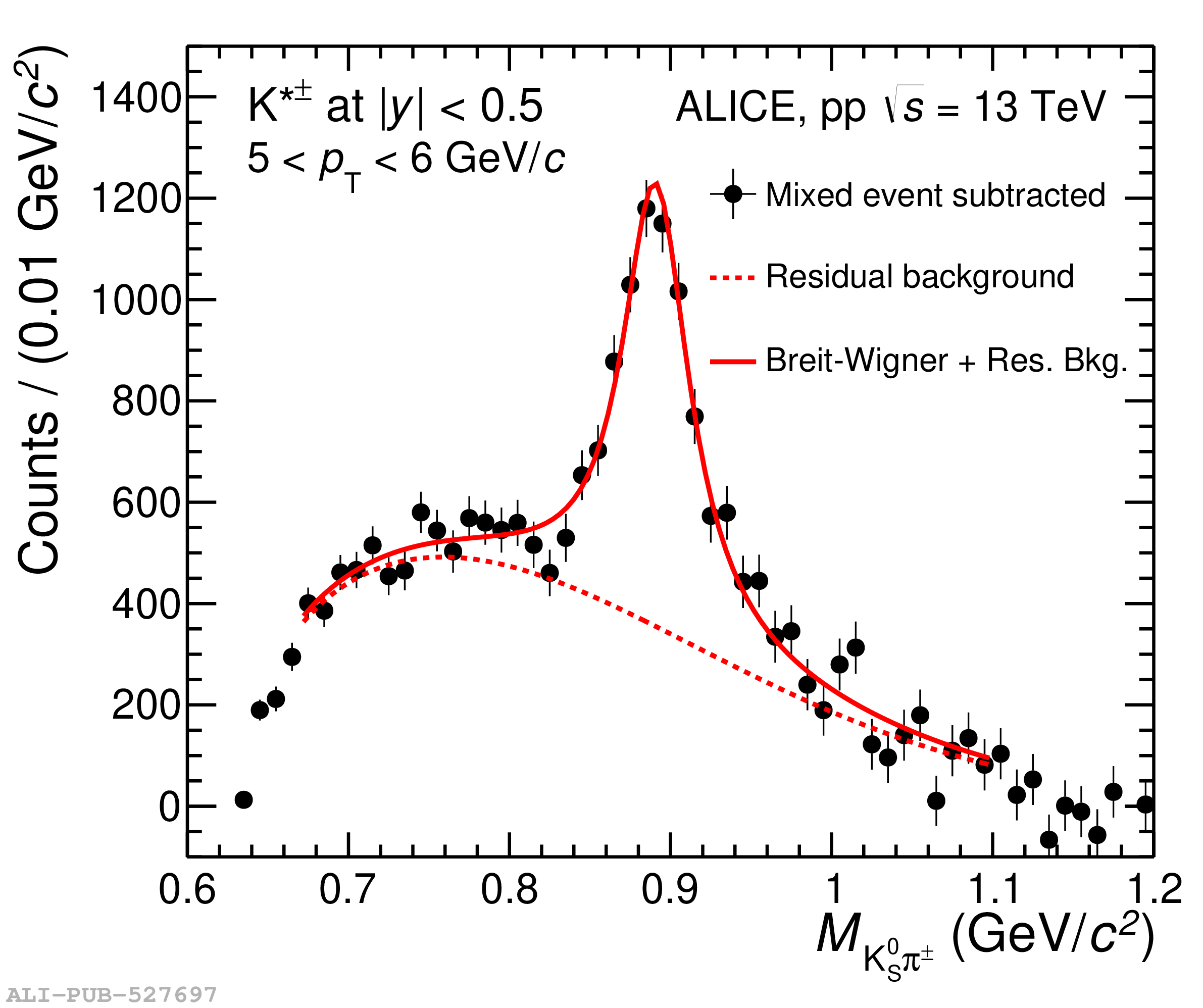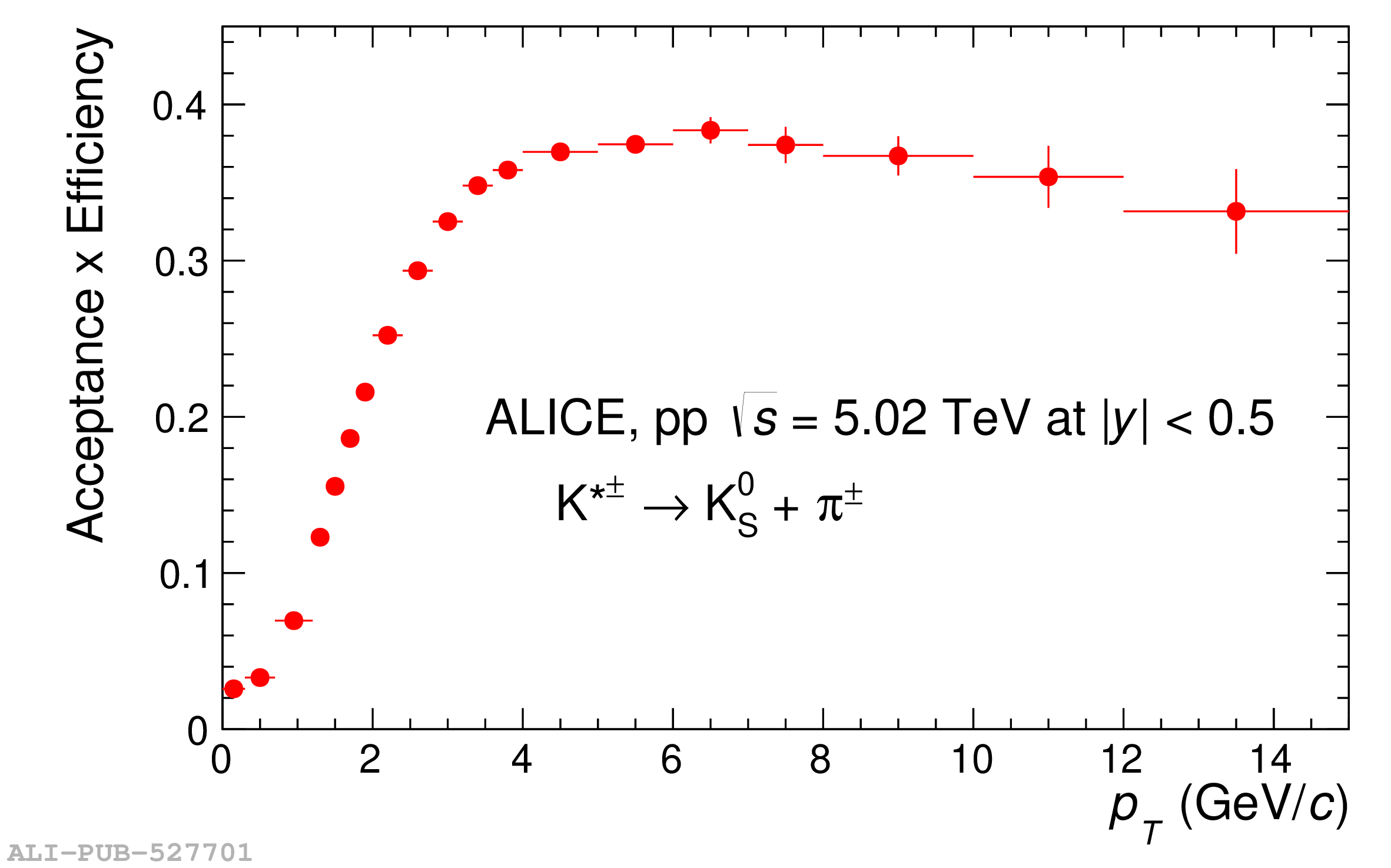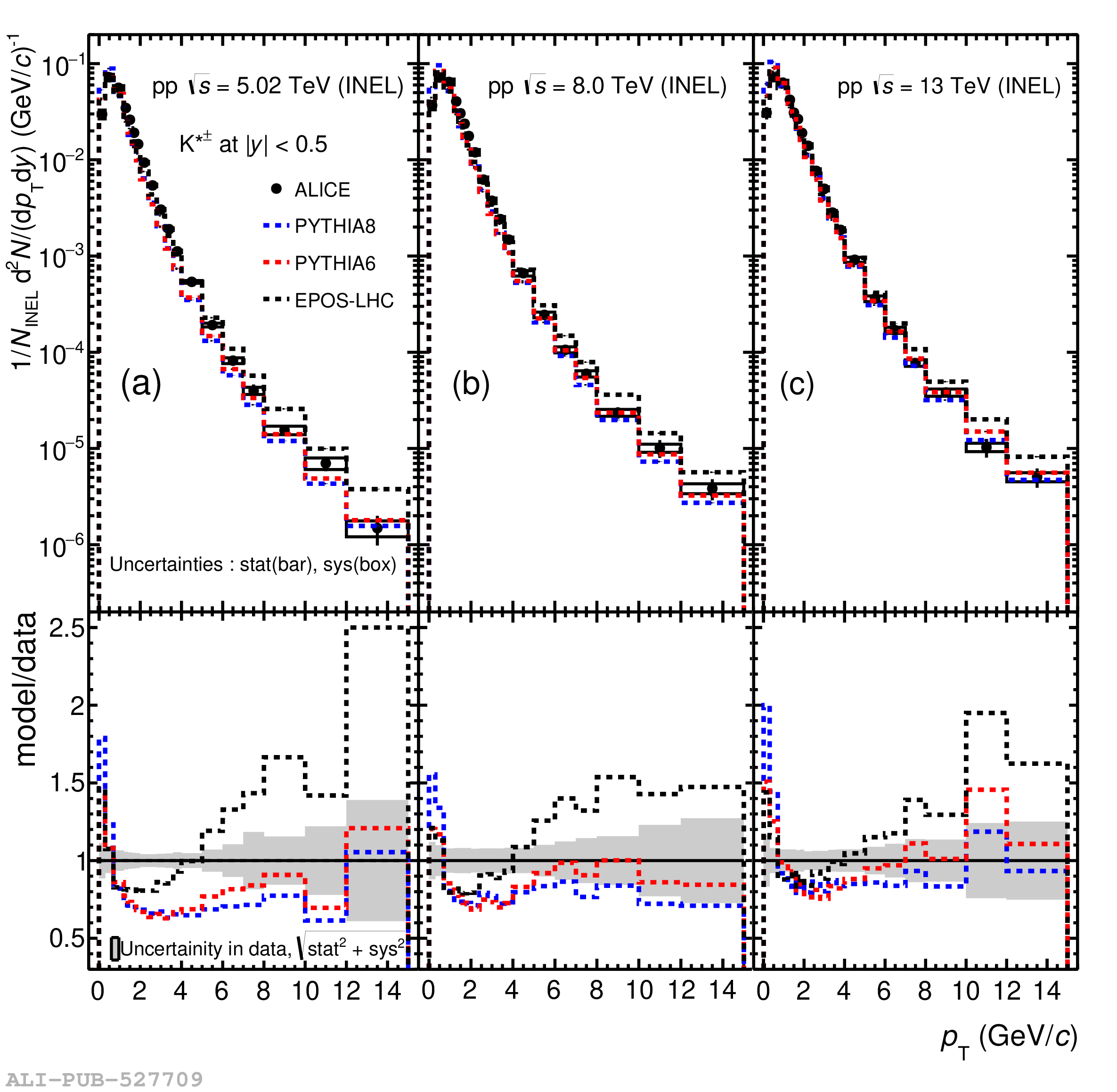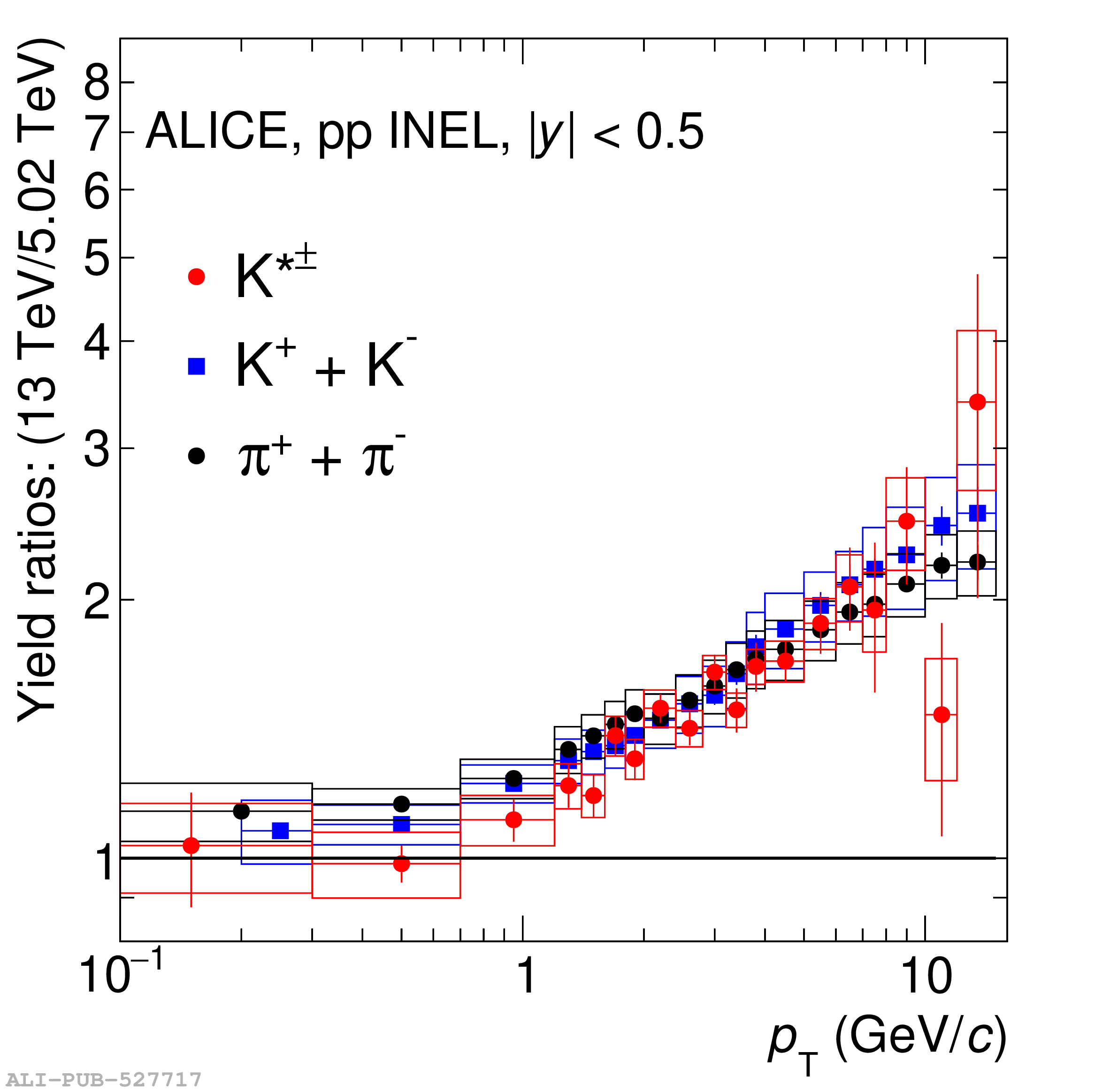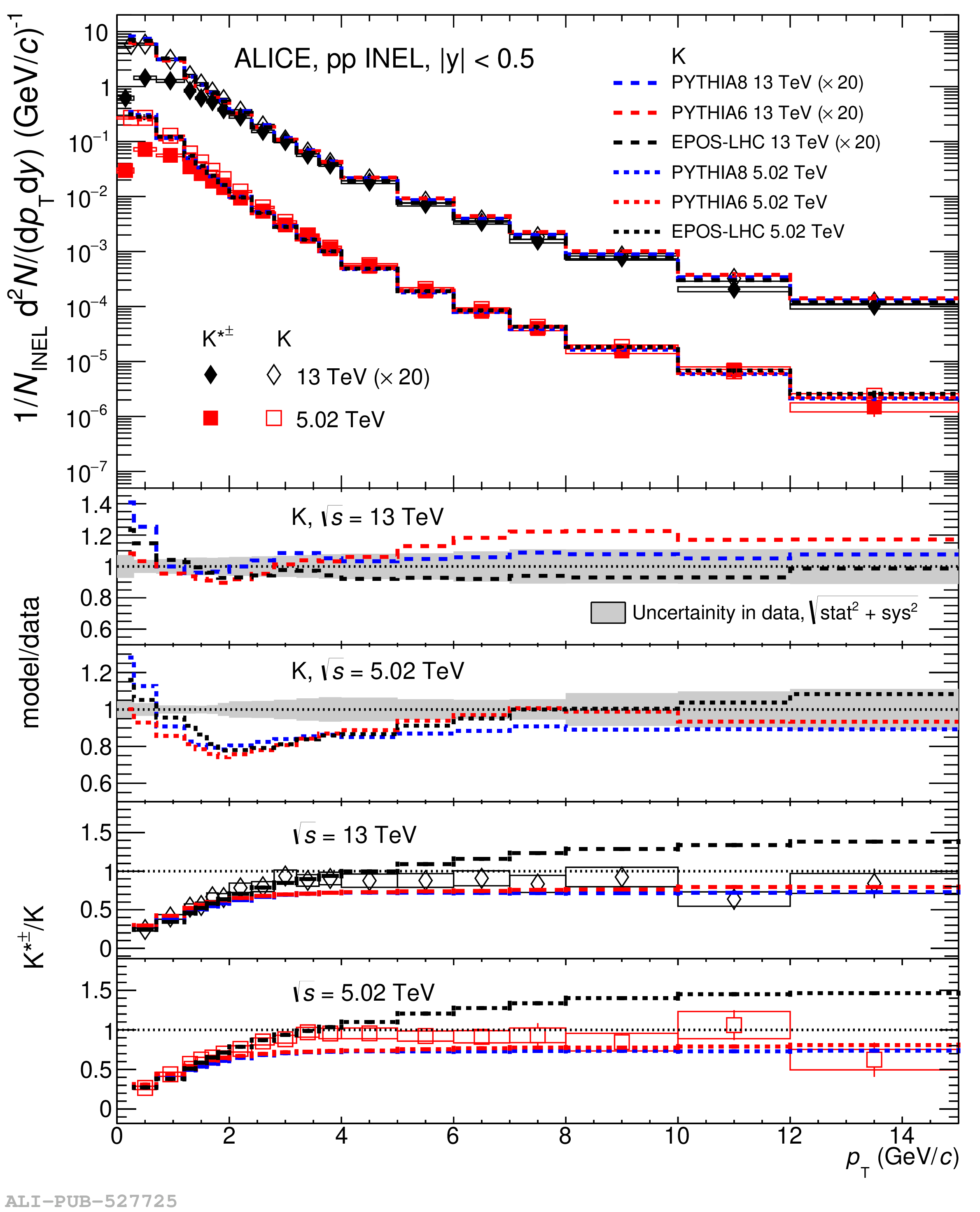The first results on K$^{*}$(892)$^{\mathrm{\pm}}$ resonance production in inelastic pp collisions at LHC energies of $\sqrt{s} = 5.02$, 8, and 13 TeV are presented. The K$^{*}$(892)$^{\mathrm{\pm}}$ has been reconstructed via its hadronic decay channel K$^{*}$(892)$^{\mathrm{\pm}}$ $\rightarrow$ $\mathrm {K^0_S}$ $~+~\pi^{\pm}$ with the ALICE detector. Measurements of transverse momentum distributions, $p_{\mathrm{T}}$-integrated yields, and mean transverse momenta for charged K$^{*}$(892) are found to be consistent with previous ALICE measurements for neutral K$^{*}$(892) within uncertainties. For $p_{\mathrm{T}} > 1$ GeV/$c$ the K$^{*}$(892)$^{\mathrm{\pm}}$ transverse momentum spectra become harder with increasing centre-of-mass energy from 5.02 to 13 TeV, similar to what previously observed for charged kaons and pions. For $p_{\mathrm{T}} <~ 1$ GeV/$c$ the K$^{*}$(892)$^{\mathrm{\pm}}$ yield does not evolve significantly and the abundance of K$^{*}$(892)$^{\mathrm{\pm}}$ relative to K is rather independent of the collision energy. The transverse momentum spectra, measured for K$^{*}$(892)$^{\mathrm{\pm}}$ at midrapidity in the interval $0 <~ p_{\mathrm{T}} <~ 15$ GeV/$c$, are not well described by predictions of different versions of PYTHIA 6, PYTHIA 8 and EPOS-LHC event generators. These generators reproduce the measured $p_{\mathrm{T}}$-integrated K$^{*\mathrm{\pm}}$/K ratios and describe well the momentum dependence for $p_{\mathrm{T}} <~ 2$ GeV/$c$.
Phys. Lett. B 828 (2022) 137013
HEP Data
e-Print: arXiv:2105.05760 | PDF | inSPIRE
CERN-EP-2021-086
Figure group






